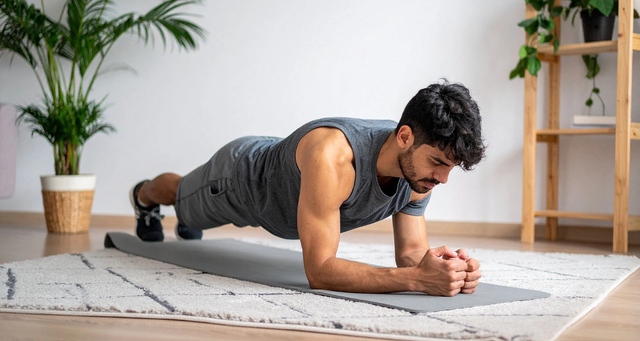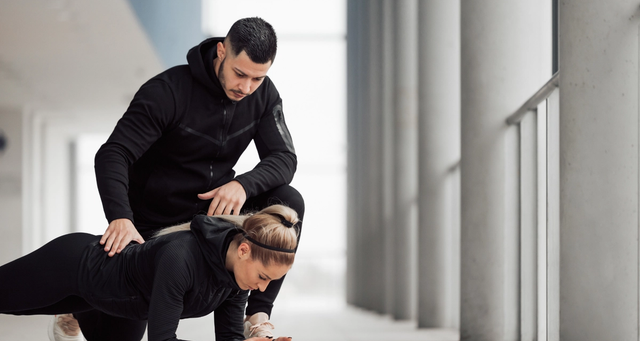
Improving Hip Stability Through Exercise: 8 Exercises to Try
Unstable hips can be a problem. Instability in this area can have ripple effects, impacting overall mobility and balance. It can even raise your risk of injuries, so it’s important to work to have strong, stable hips. This helps support your lower back and knees, enhancing athletic performance and daily activities.
If you’re looking to improve hip stability, incorporating targeted pelvic stability exercises into your routine can make a world of difference.
Hip-Stabilizing Exercises
All sorts of exercises can target the muscles that contribute to hip stability, but a few stand out among the rest, including:
1. Clamshells
Clamshells support hip stability by activating the gluteus medius, which is a key contributor to stability in this area. It also helps improve balance and minimizes knee and lower back pain. To do it, follow these steps:
Complete three sets of 15 reps on each side. As you advance, you can incorporate a resistance band around your knees for extra resistance and challenge.
2. Glute Bridges
Glute bridges are excellent for the glutes and hamstrings, both key contributors to hip and pelvis stability. As you progress, you can add weight and resistance bands, turning up the heat to challenge the target muscles even more.
Here are the basics of the move:
Complete three sets of 15 reps.
3. Single-Leg Deadlifts
The single-leg deadlift helps improve balance and unilateral hip stability by honing in on the muscles of your glutes, core, and hamstrings. As a beginner, start with lightweight or no weight at all while you get the form down. These exercises can be hard on your back if you’re not doing them right, so it’s important that you get the form perfect before adding weight.
Complete three sets of 12 reps on each side.
4. Side-Lying Leg Lifts
The side-lying leg lift focuses on your hip abductors, which are located on the outside of your hips. These muscles are essential in hip stability, helping keep your hips and pelvis in place and preventing injuries.
Complete three sets of 15 reps on each side. For an added challenge, add a resistance band just above your knees.

5. Hip Thrusts
Hip thrusts are excellent for building glute strength, an integral part of hip stability. They’re versatile enough to accommodate people of varying fitness levels, whether you’re just starting or want a good challenge.
Complete three sets of 12 reps. As you progress, add weight by stacking a dumbbell on your hips. You can further progress the exercise by increasing the weight.
6. Lateral Band Walks
This exercise hones in on your gluteus medius and minimus to enhance lateral hip stability and strength. You can easily progress the move by adjusting the resistance of your chosen resistance band. However, you don’t have to use a resistance band in the beginning/
Complete three sets of 15 steps in each direction.
7. Fire Hydrants
Fire hydrants activate the glutes and hip abductors, helping to improve overall hip stability and mobility. Like the lateral walks, you can increase the intensity of this exercise by adding a resistance band around your thighs, but you don’t have to start with one.
Complete three sets of 15 reps on each side.
8. Plank Leg Lifts
Plank leg lifts activate the muscles of the core, glutes, and hip muscles, helping improve overall stability and strength throughout your hips and the rest of your body. If you’re new to planks, start by holding the plank, leaving the leg lift out of the picture. Otherwise, you can start with your knees down in the plank and add the leg lift.
Complete three sets of 12 reps on each side.
Tips for Effective Hip Stability Training
When incorporating hip stabilization exercises into your exercise routine, remember these tips:
- Focus on form: Improper form can cause injury, so it’s important to take it slow and ensure your form is perfect before moving on.
- Start with a warm-up: Always start your training with a proper warm-up to prepare your muscles and joints for exercise, even if you’re just doing a few hip stability exercises.
- Stay consistent: Change requires consistency, so it’s important to stay on top of your training regimen. Be consistent with the exercises for hip stability, and with time, you’ll begin to notice improvements.
- Progress gradually: Take your time and let your body slowly build the muscles that stabilize your hips. As you improve, increase the resistance or difficulty of the exercises.
Training hip stability is a process that takes time. Be patient and trust the process! If you need help with your hip stability training regimen or aren’t sure which exercises to incorporate, consider chatting with a certified personal trainer in your area. They can help you determine the best moves to incorporate and how to best integrate them into your training regime.
Start your Svetness journey today
Get a free consultation and see how our trainers can transform your wellness journey.





